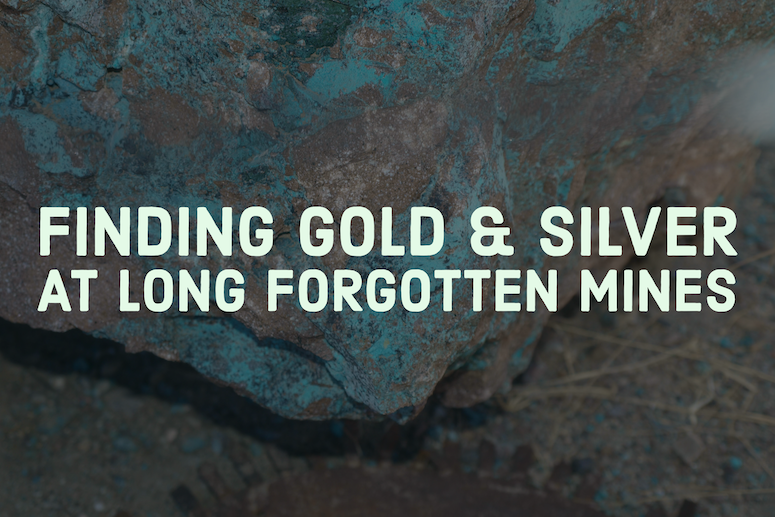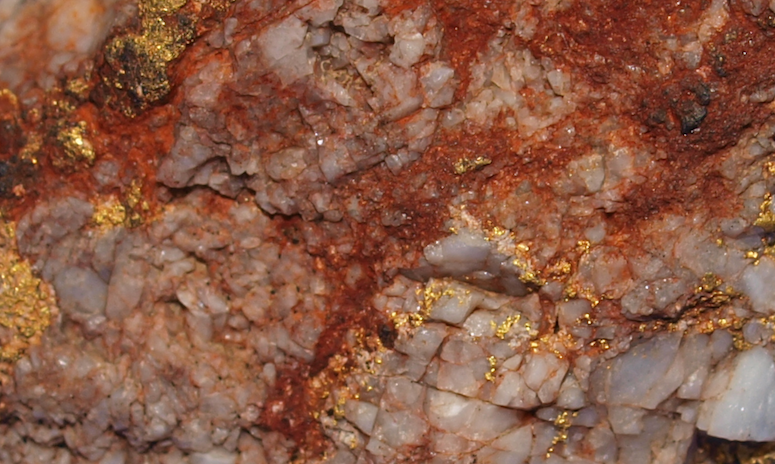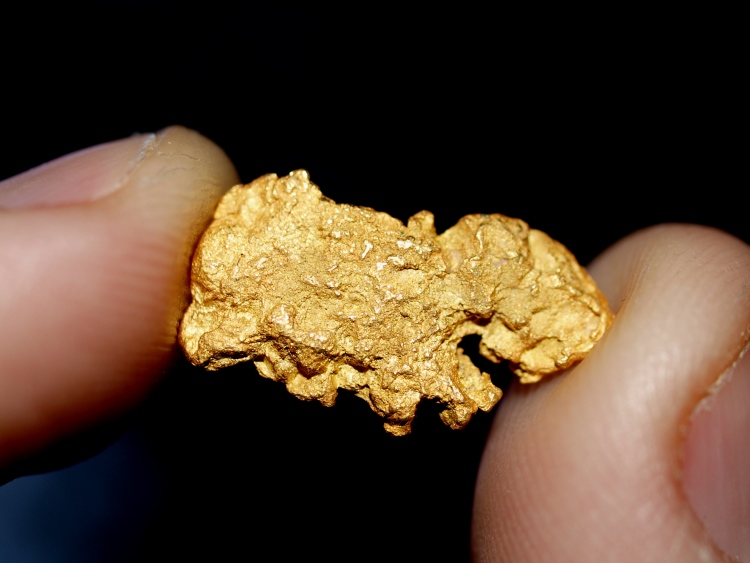
A lot more is involved with successful prospecting than many people might realize. There is a whole lot more than just digging for gold. You’ve got to find a good place to go, and that’s the biggest challenge.
Finding virgin ground is no easy task, but nowadays we are often following in the footsteps of other miners. Men have been scouring the hills for centuries now in search of natural treasures such as gold and silver. Nowadays, one of the best ways to find the rich locations simply requires that we go where the “old timers” already went.
There are many rich mines out there that were long ago forgotten, and by todays standards they are still exceptionally rich.
Research is the First Step to Finding a Mine
You start the research process before you even leave the house. There are lost mines out there, but you need to figure out where they are. You aren’t likely to stumble across one if you just wander aimlessly around the countryside. You need to figure out where to go.
The first step is to dig into historical information that is available. If there was mining in your area, there is likely some good information in published books that are available. Basic “where to find gold” information for your area is a good start.
If you want to dig a little deeper into research, I would seek out the old mining reports. These were often written by the US Geological Survey or the state mining agency. Some of these can be found as free PDF-reports online. Others may require that you check with your local library.
The library can be an excellent resource for research, and they will likely have a lot of information that you can’t find online. They might also have old newspaper scans available. I have found some great leads by looking at old newspapers that date back to the late 1890s.

Is the Ground Open for Prospecting?
Once you have a general idea of an area that you want to explore or a specific mine that you want to try and find, you need to determine if the land is legally accessible.
Land status is very important. Lots of mines are located on private land, and you cannot access them unless you get permission from the owner. Be aware of your state laws. Even if there aren’t any “No Trespassing” signs, it is still your responsibility in many states that you know the land status. If it’s private, you need permission.
Fortunately, there are lots of old mines that are located on public land. However, you need to determine the exact land status. Federal lands managed by the US Forest Service and the Bureau of Land Management are best for miners. Lands managed by other agencies like the Fish & Wildlife Service, National Parks, etc. will generally not be open for prospecting.
State lands also involve a different process, and it is generally more challenging to prospect these lands. It depends on the state or province where you are, and you will have to do the research to determine the process.
I do 99% of my gold prospecting on BLM and Forest Service lands.
Next, you will need to determine of the lands is already claimed. Mining claims are still very much the same as they were during the early gold rushes. An individual miner can stake a claim on a section of land, and they legally own the minerals on that land. Figuring out which lands are “claimed up” and which are open is no easy task, especially for beginners.
There’s more to it than just looking for claim stakes. You have to figure out if a piece of land is actively claimed. The land may be open for casual use (camping, hunting, fishing, etc.), but the ownership of the minerals is exclusive too the claim owner. If you do any prospecting at all, you are essentially stealing those minerals. So this is an important process.
Read: Staking a Gold Mining Claim
Planning a Scouting Trip in the Field
Now that we have done our research and located the potential site of an old mine and we’ve determined that the ground is open and available for us to prospect on, now it’s time to plan our trip!
Safety is the most important part of venturing out into the field. Each area is different. Get some good maps and evaluate the area that you are visiting. Will you be able to get there with a vehicle? Do you need 4×4 or a 4-wheeler to get there?
If the mine you are trying to access is away from roads (which is common) then you are going to have to hike in. Make sure you have good supplies, plenty of water and food, and decent clothing for your adventure. Plan for the worst-case scenarios, and make sure that someone knows where you are going just incase something goes wrong.
Read: Safety While Prospecting in the Backcountry
What is the Best Way to Prospect the Area?
This won’t always be apparent until you get to the site and evaluate the situation, but sometimes you can determine the best prospecting methods through your research. Take note of any details provided in old reports about the specific mine you are exploring. It may give you an indication of the best tools to bring along.
Are you exploring a gold mine located on a creek or river? The a simple gold pan, rock hammer, and a few crevicing tools might be all that you need for your exploratory trip.
Is the site in the desert, many miles away from any water source? They perhaps a metal detector is the best tool to bring along. Yet a detector will only work on larger bits of gold, so you might need to pack in a drywasher to effectively work a desert mine.
If you are checking out an old hard rock mine, and want to evaluate the potentials of the remaining ores, then you might need nothing more than a good hammer and chisel. This will allow you to collect are samples for future analysis.
Exploring the Surrounding Area. Virgin Ground?
Often an existing mine still has decent material on site. You can dig in basically the same location that the old-timers dug and still find good material that was left behind.
This isn’t always the case though. Sometimes your prospecting will reveal that most of the gold is long-gone, and you are better off to move to a new area. If they mined out the richest material and left very little behind, then there’s no point in spending much time there. Best to move on and find richer ground nearby.
If this happens, don’t be too quick to leave the area. Even if a mine seems to be thoroughly worked out, it doesn’t mean that there aren’t additional deposits in the vicinity. This is very common, and something to take very seriously.
The mineral deposits may have been so good that a nearby lesser source was ignored. Or perhaps it was a deposit that simply didn’t “pay” to work back in the 1860s, yet now the minerals are valuable enough to mine once again.
Look for nearby rock types, soil color, quartz outcroppings, and any other indicators that might lead you to more gold.
Keep a Low Profile
I always encourage you to keep a low profile when out prospecting for valuable mineral deposits. If you are on BLM or Forest Service land that is unclaimed, that means that ANYONE can claim it at any time. So if you discover a locations with valuable minerals.. whether it’s gold, silver, gemstones, or any mineral of economic value, you need to be intentional with your discovery.
You need to be careful with any discovery that you make. Is it best to stake a claim as quickly as possible? Or perhaps you should quickly mine the surface deposits as quickly as possible and then move on, never staking a claim or letting others know that you were there.
Either way, I encourage you to put some effort into being unseen, and work the area silently until you’ve recovered all valuable minerals from the site, or you’ve filed a claim on the area.
Read: Protecting Your Mineral Discovery – A Claim may be the Worst Option

When to Work it and When to Move On
Ultimately, you will need to determine if an old mine is still productive. Will it pay to work?
Mines were abandoned for a wide variety of reasons. Sometimes they were too remote at the time, and took too much effort to transport ores from the mine to be processed. With modern transportation, that isn’t the case anymore and it may be very profitable to work them!
Many precious metals mines were abandoned after World War 2 and never revisited. They still contain valuable ores, despite being ignored for over 70 years now.
Another consideration is what your time is worth. Often you will research and locate an area that is somewhat productive. Perhaps you can find enough gold to interest you, yet a long day of sluicing only yields $20 worth of gold. I would suggest that you move on, and seek out a richer area. It can be hard to leave gold behind, but you need to invest some time in locating new areas. This is what prospecting is all about.
Next: Crush & Melt! How to Remove Gold from Rich Ores
